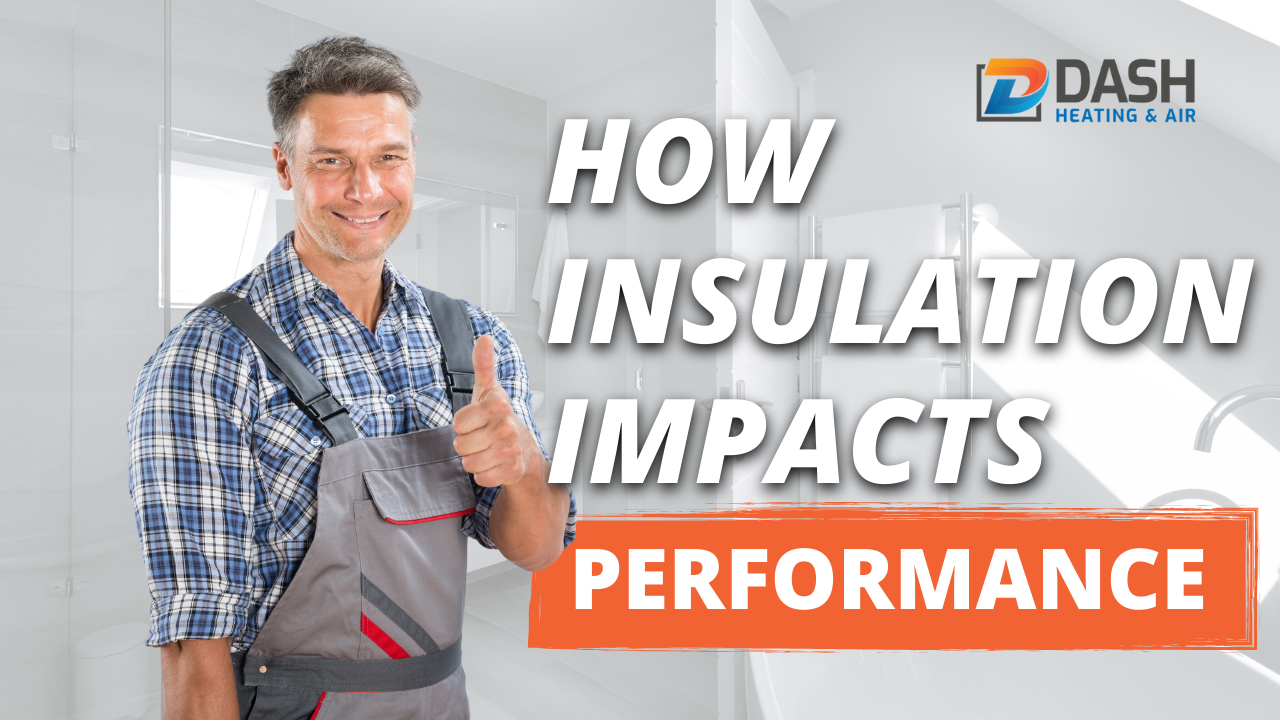How Proper Insulation Impacts HVAC Performance and Energy Savings

When it comes to home comfort and energy efficiency, proper insulation is often an unsung hero. It’s the silent guardian that keeps your home warm in winter, cool in summer, and your energy bills in check year-round. In this comprehensive guide, we will delve into the critical role that insulation plays in your HVAC (Heating, Ventilation, and Air Conditioning) system’s performance and how it can lead to significant energy savings. From understanding insulation types to assessing your home’s insulation needs and optimizing your HVAC system, you’ll gain valuable insights into creating a comfortable and efficient living space.
Chapter 1: The Importance of Insulation
1.1 Understanding Insulation’s Role:
Begin by explaining the fundamental role of insulation in a home. Discuss how it acts as a barrier against heat transfer, preventing heat loss in winter and heat gain in summer.
1.2 Energy Efficiency Impact:
Highlight how insulation significantly impacts energy efficiency. Mention that without proper insulation, an HVAC system may have to work harder and consume more energy to maintain a comfortable temperature.
1.3 Comfort and Consistency:
Discuss the link between insulation and indoor comfort. Explain how insulation helps maintain consistent temperatures throughout the home, eliminating hot and cold spots.
Chapter 2: Types of Insulation
2.1 Common Insulation Materials:
Discuss the most common insulation materials used in homes, including fiberglass, cellulose, foam board, spray foam, and more. Explain the pros and cons of each type.
2.2 Insulation Forms:
Explain the different forms insulation can take, such as batts, rolls, loose-fill, and rigid boards. Discuss the best applications for each form.
2.3 Insulation R-Value:
Introduce the concept of R-value, which measures insulation’s resistance to heat flow. Discuss how different insulation materials have varying R-values and their impact on performance.
Chapter 3: Signs of Insulation Problems
3.1 Drafts and Temperature Variations:
Explain how drafts, cold spots, and temperature variations in your home can be indicators of insulation issues. Encourage homeowners to pay attention to these signs.
3.2 High Energy Bills:
Discuss the connection between inadequate insulation and high energy bills. Explain that insulation problems can lead to HVAC systems working overtime.
3.3 Ice Dams and Roof Issues:
Describe how ice dams and roof problems can be related to insulation problems in the attic. Emphasize the potential for costly structural damage.
Chapter 4: Insulation Assessment and Evaluation
4.1 DIY Inspection:
Provide guidance on how homeowners can conduct a basic insulation inspection themselves. Explain what to look for and the areas to focus on, such as the attic, walls, and crawl spaces.
4.2 Professional Assessment:
Highlight the benefits of hiring a professional insulation contractor or HVAC technician to conduct a comprehensive assessment. Discuss the use of thermal imaging technology and other tools.
Chapter 5: Upgrading and Adding Insulation
5.1 Attic Insulation:
Explain the importance of a well-insulated attic and how adding or upgrading insulation in this area can lead to significant energy savings.
5.2 Wall and Crawl Space Insulation:
Discuss the benefits of insulating walls and crawl spaces. Explain the methods used, including blown-in insulation and foam board.
5.3 Insulation Retrofit:
Explain how homeowners can retrofit existing insulation to improve its performance. Discuss the process and benefits of retrofitting.
Chapter 6: HVAC System Optimization
6.1 Right-Sizing HVAC Systems:
Explain how proper insulation impacts the size and capacity of HVAC systems. Discuss the importance of matching HVAC systems to the home’s insulation and heating/cooling needs.
6.2 Ductwork Insulation:
Discuss the insulation of HVAC ductwork and its impact on energy efficiency. Explain how uninsulated ducts can lead to heat loss or gain.
6.3 Sealing Air Leaks:
Explain how sealing air leaks in the home’s envelope complements insulation efforts. Discuss common areas where air leaks occur and the benefits of sealing them.
Chapter 7: The Return on Investment
7.1 Initial Costs vs. Savings:
Discuss the initial investment required for insulation upgrades and improvements. Emphasize how these costs can be quickly recouped through energy savings.
7.2 Long-Term Benefits:
Highlight the long-term benefits of proper insulation, including reduced energy bills, increased home value, and improved comfort.
Chapter 8: Professional Insulation Services
8.1 Choosing the Right Insulation Contractor:
Provide tips and guidelines for homeowners seeking insulation services. Discuss factors to consider, such as experience, certifications, and references.
8.2 The Insulation Installation Process:
Explain what homeowners can expect during the insulation installation process. Discuss timelines, preparation, and post-installation inspections.
Conclusion
Are you ready to take the first step towards a more comfortable and energy-efficient home? Reach out to us today to schedule a professional insulation assessment or consultation. Our experienced team will evaluate your home’s insulation requirements, recommend the right insulation materials and techniques, and ensure that your HVAC system operates at its peak efficiency. Say goodbye to drafty rooms, high energy bills, and temperature inconsistencies. Contact Dash Heating and Air now and embark on a journey towards a cozier, eco-friendly, and cost-effective living space. Your home deserves the best, and Dash Heating and Air is here to deliver it!
